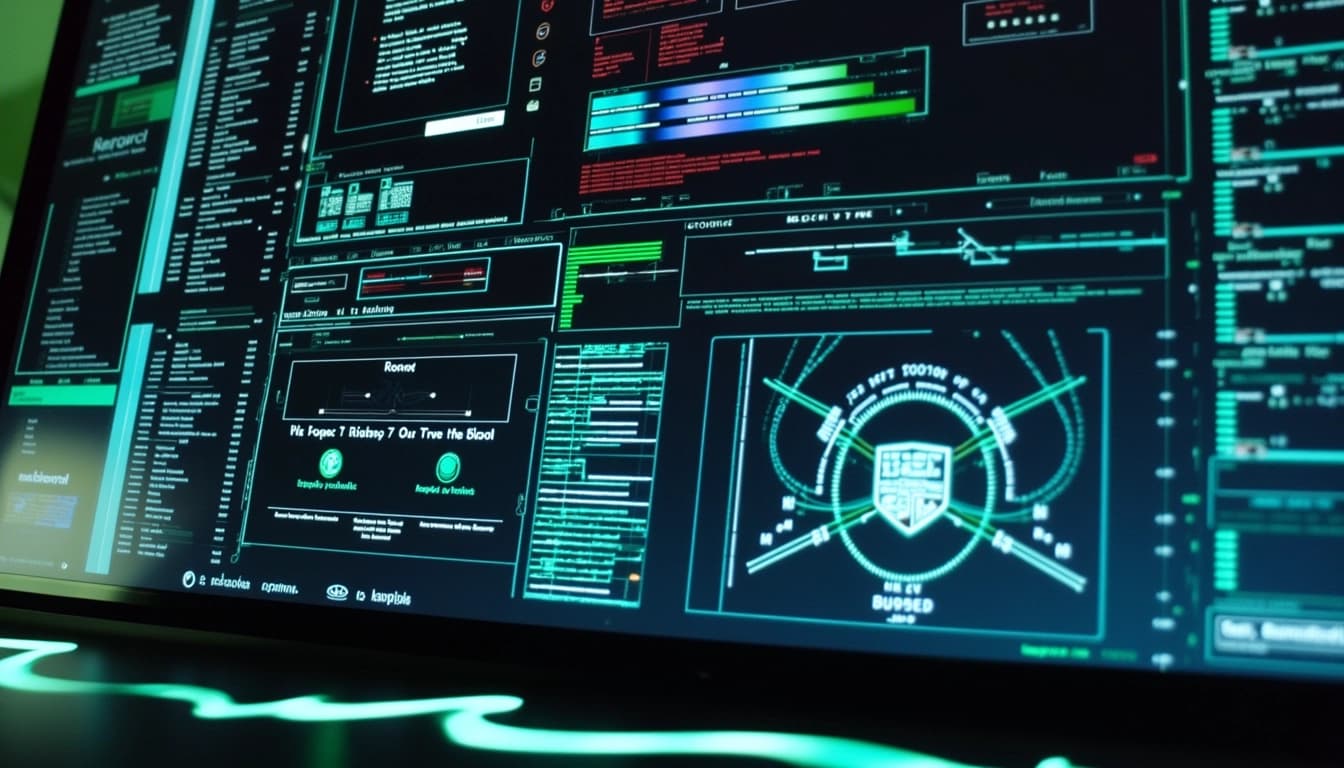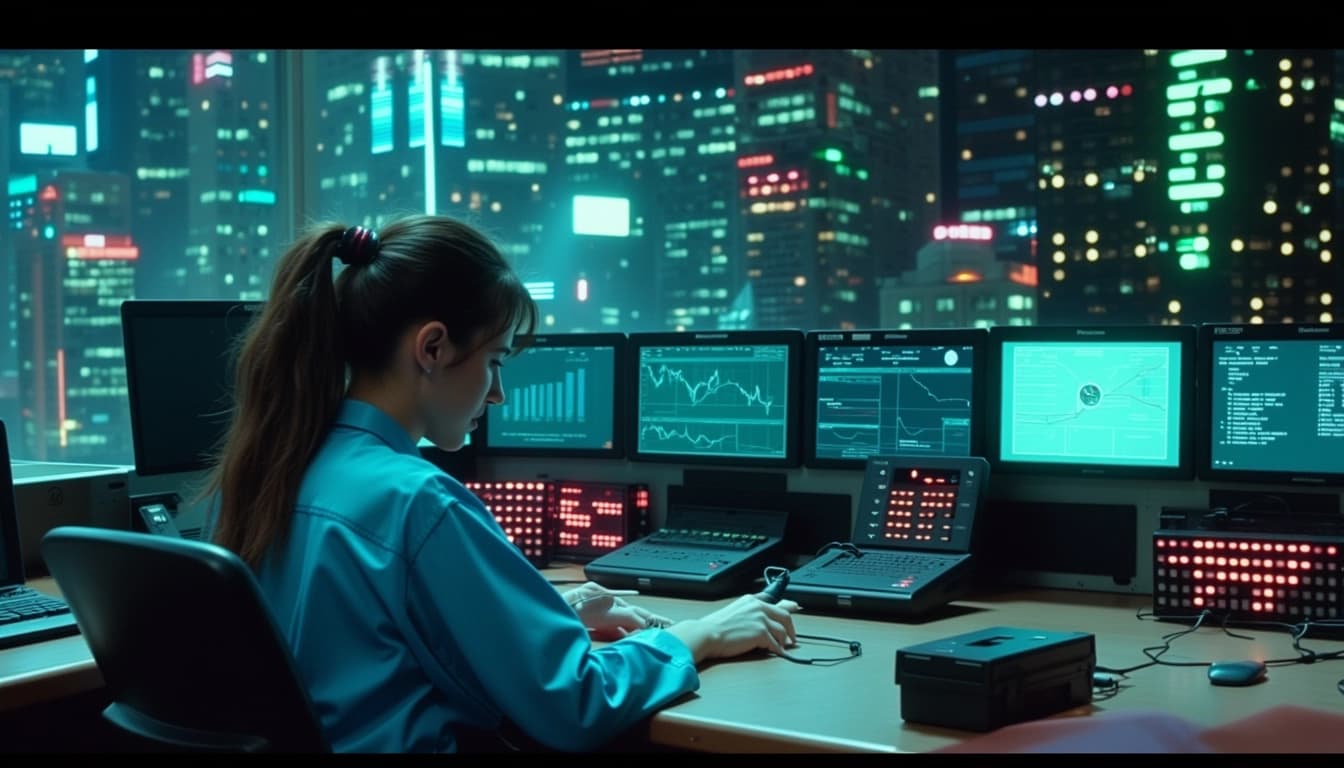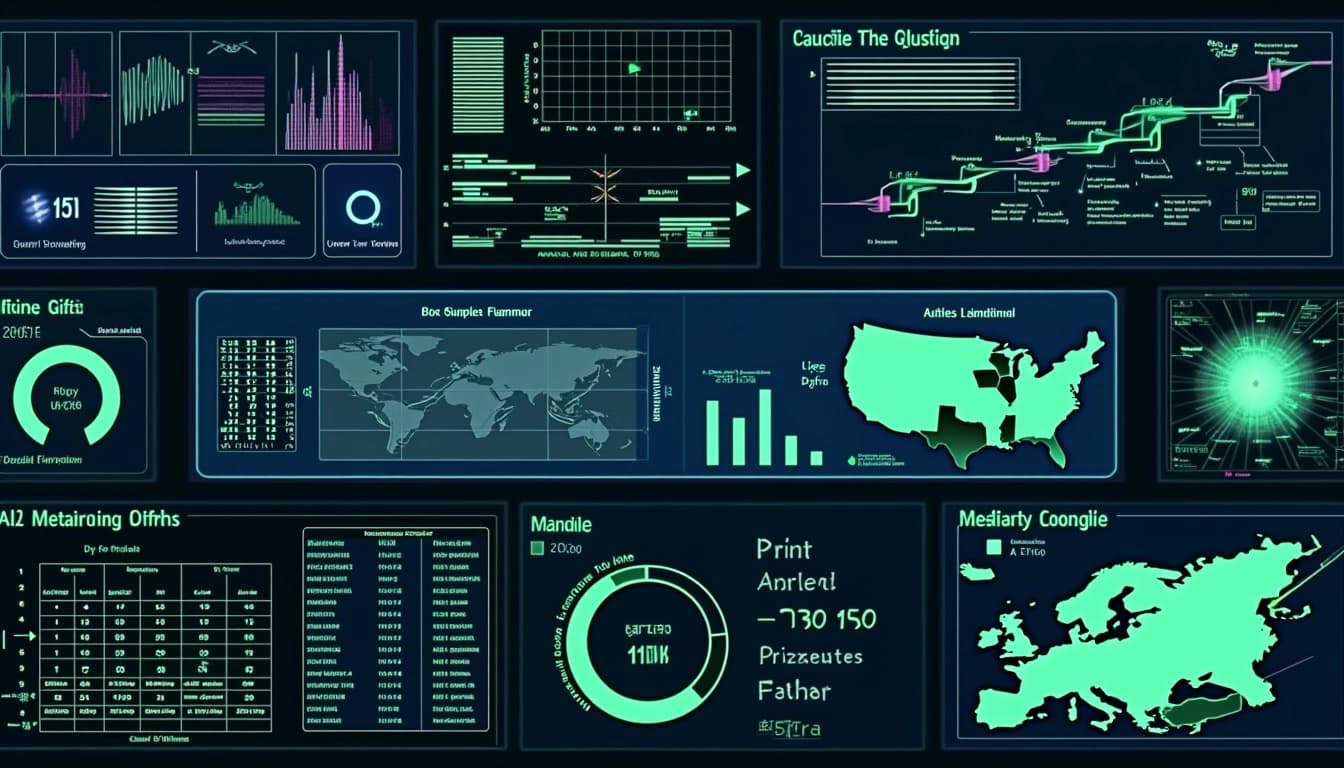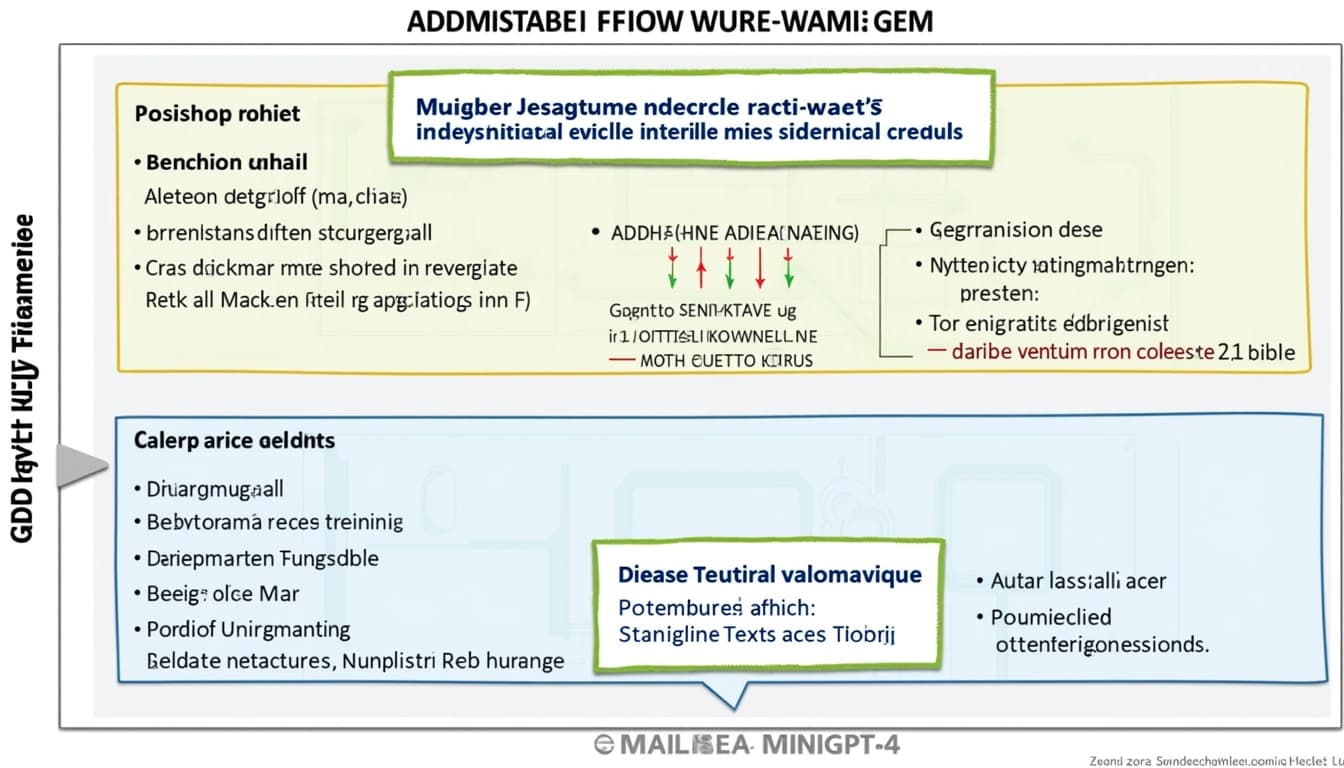
MiniGPT-4: Performance on Real-World Prompts
By John Doe 5 min
Key Points
Research suggests MiniGPT-4 performs well on real-world prompts, especially for tasks like image description and website creation.
It seems likely that its efficiency and open-source nature make it suitable for practical applications, though specific benchmarks are limited.
The evidence leans toward MiniGPT-4 being versatile, handling tasks like writing stories from images and providing cooking instructions from photos.
Introduction to MiniGPT-4
MiniGPT-4 is an open-source AI model designed to handle vision-language tasks, meaning it can process both images and text simultaneously. It aligns a frozen visual encoder with a frozen large language model (LLM), specifically Vicuna, using just one projection layer, making it computationally efficient.
Performance on Real-World Prompts
MiniGPT-4 shows promising performance on real-world prompts, such as generating detailed descriptions of images, creating websites from hand-drawn drafts, and writing stories or poems inspired by visuals. It can also provide solutions to problems shown in images and teach cooking based on food photos. While specific performance metrics for real-world prompts are not extensively documented, its design and training suggest it handles practical scenarios effectively.
Unexpected Detail: Community Accessibility
An unexpected aspect is MiniGPT-4's open-source availability, which allows developers and researchers to fine-tune it for specific real-world needs, potentially expanding its practical applications over time.
Survey Note: Detailed Analysis of MiniGPT-4's Performance on Real-World Prompts
MiniGPT-4, an open-source AI model developed for vision-language tasks, has garnered attention for its potential in handling real-world prompts. This section provides a comprehensive analysis of its capabilities, performance, and practical applications, drawing from available research and documentation as of March 31, 2025.
Background and Architecture
MiniGPT-4 was introduced to explore the hypothesis that the advanced multi-modal generation capabilities of GPT-4 stem from the use of a sophisticated large language model (LLM). It aligns a frozen visual encoder with a frozen LLM, Vicuna, using a single projection layer, making it computationally efficient. The model undergoes a two-stage training process.
Pretraining and Finetuning Stages
In the pretraining stage, MiniGPT-4 is trained on approximately 5 million aligned image-text pairs to align the vision and language models, ensuring the visual encoder can map features understood by the language model. The finetuning stage involves training on a smaller, high-quality dataset (around 3500 pairs) to enhance generation reliability and usability, addressing issues like repetition and fragmented sentences.
Architecture Details
This architecture, detailed in the paper 'MiniGPT-4: Enhancing Vision-Language Understanding with Advanced Large Language Models', enables MiniGPT-4 to perform a range of vision-language tasks with minimal computational resources. The model's efficiency and effectiveness are highlighted in its ability to handle complex multi-modal tasks.
Capabilities and Real-World Applications
MiniGPT-4 demonstrates capabilities similar to those of GPT-4, as outlined on its official website. These include generating detailed image descriptions, creating websites from hand-written drafts, and writing stories or poetry inspired by visuals. The model's versatility makes it useful for accessibility tools, educational platforms, and creative writing support.

Conclusion & Next Steps
MiniGPT-4 represents a significant advancement in vision-language models, offering powerful multi-modal generation capabilities with minimal computational overhead. Future developments could focus on expanding its dataset and refining its finetuning process to further enhance performance and usability.

- Detailed image description generation
- Website creation from hand-written drafts
- Writing stories and poetry from images
MiniGPT-4 is an open-source vision-language model developed by researchers from King Abdullah University of Science and Technology (KAUST). It combines a frozen visual encoder with a frozen large language model (LLM), Vicuna, to enable advanced vision-language capabilities. The model is designed to be lightweight and efficient, making it a practical alternative to larger models like GPT-4.
Technical Architecture and Capabilities
MiniGPT-4 integrates a pre-trained visual encoder, such as CLIP or BLIP-2, with the Vicuna language model. This combination allows it to process both images and text, generating detailed descriptions, answering questions about images, and even creating stories or poems based on visual inputs. The model is fine-tuned with a small set of high-quality vision-language pairs to improve alignment between visual and textual data.
Performance Benchmarks
In benchmarks, MiniGPT-4 demonstrates competitive performance in tasks like image captioning and visual question answering. While it may not match GPT-4 in accuracy for complex reasoning tasks, its efficiency and open-source nature make it a valuable tool for developers and researchers. The model's ability to generate creative content from images has been particularly praised.
Real-World Use Cases and User Experiences
MiniGPT-4 has been used in various applications, including accessibility tools for visually impaired users, educational content generation, and customer service image analysis. Users have shared positive experiences on platforms like GitHub, highlighting its utility in generating content from images. However, some note slower response times compared to commercial alternatives.

Limitations and Future Potential
Despite its strengths, MiniGPT-4 faces challenges such as limited visual perception for detailed textual information in images and slow inference times. These limitations may affect its real-world deployment. However, ongoing development and community contributions could address these issues, expanding its applications in fields like healthcare and creative industries.
Conclusion & Next Steps
MiniGPT-4 represents a significant step forward in open-source vision-language models. Its efficiency and accessibility make it a promising tool for various applications. Future improvements could focus on enhancing its visual perception and reducing inference times to make it even more practical for widespread use.

- Open-source and accessible
- Competitive performance in vision-language tasks
- Potential for community-driven improvements
MiniGPT-4 is an advanced vision-language model that combines a frozen visual encoder with a frozen large language model (LLM) through a single projection layer. It is designed to bridge the gap between visual and textual data, enabling sophisticated multimodal understanding and generation tasks. The model is particularly noted for its efficiency and open-source nature, making it accessible for a wide range of applications.
Key Features of MiniGPT-4
MiniGPT-4 leverages a pretrained visual encoder (BLIP-2) and a powerful language model (Vicuna) to process and generate responses based on both images and text. The model is trained in two stages: pretraining and fine-tuning, which ensures robust performance across various tasks. Its ability to generate detailed descriptions, create websites from handwritten drafts, and write stories based on images sets it apart from other vision-language models.
Efficiency and Open-Source Nature
One of the standout features of MiniGPT-4 is its computational efficiency. Unlike larger models such as GPT-4, MiniGPT-4 requires significantly fewer resources, making it suitable for deployment on standard hardware. Additionally, its open-source availability allows researchers and developers to customize and extend its capabilities, fostering innovation in the field of multimodal AI.
Performance and Limitations
MiniGPT-4 demonstrates strong performance in tasks like image description, creative content generation, and multimodal dialogue. However, it inherits some limitations from its underlying LLM, including occasional hallucinations and slow inference speeds. These issues are areas of active research and development within the community.

Conclusion & Next Steps
MiniGPT-4 represents a significant step forward in vision-language models, offering a balance between performance and accessibility. Its open-source nature and efficient design make it a valuable tool for both research and practical applications. Future improvements are expected to address current limitations, further enhancing its capabilities and usability.

- Open-source and customizable
- Efficient resource usage
- Strong multimodal capabilities
- Active community support
MiniGPT-4 is an innovative open-source model designed to enhance vision-language understanding by leveraging advanced large language models. It serves as a lightweight alternative to GPT-4, offering similar capabilities without the associated costs. The model has been well-received for its ability to process and generate responses based on visual inputs, making it a valuable tool for various applications.
Key Features of MiniGPT-4
MiniGPT-4 combines vision and language processing to deliver robust performance in tasks such as image captioning, visual question answering, and more. Its architecture is optimized for efficiency, allowing it to run on less powerful hardware compared to its larger counterparts. The model is particularly praised for its open-source nature, enabling developers to customize and integrate it into their projects.
Performance and Benchmarks
In benchmark tests, MiniGPT-4 has demonstrated competitive performance relative to GPT-4, especially in scenarios requiring vision-language integration. Users have reported satisfactory results in generating detailed descriptions and answering complex questions about images. The model's ability to understand and contextualize visual data sets it apart from traditional language models.
User Experience and Accessibility

One of the standout features of MiniGPT-4 is its accessibility. Being free and open-source, it lowers the barrier to entry for developers and researchers. Users have highlighted its ease of use and the active community support available through platforms like GitHub. This makes it an attractive option for those looking to experiment with vision-language models without significant investment.
Comparison with GPT-4
While MiniGPT-4 does not match GPT-4 in terms of scale or breadth of capabilities, it provides a cost-effective alternative for specific use cases. The model excels in tasks that require tight integration of visual and textual data, offering a balanced trade-off between performance and resource requirements. This makes it particularly useful for niche applications where GPT-4 might be overkill.
Conclusion and Future Prospects

MiniGPT-4 represents a significant step forward in making advanced vision-language models more accessible. Its open-source nature and efficient performance make it a promising tool for developers and researchers. As the model continues to evolve, it is expected to gain more features and improvements, further bridging the gap between proprietary and open-source solutions.
- Open-source and free to use
- Efficient vision-language integration
- Active community support
- Lightweight alternative to GPT-4